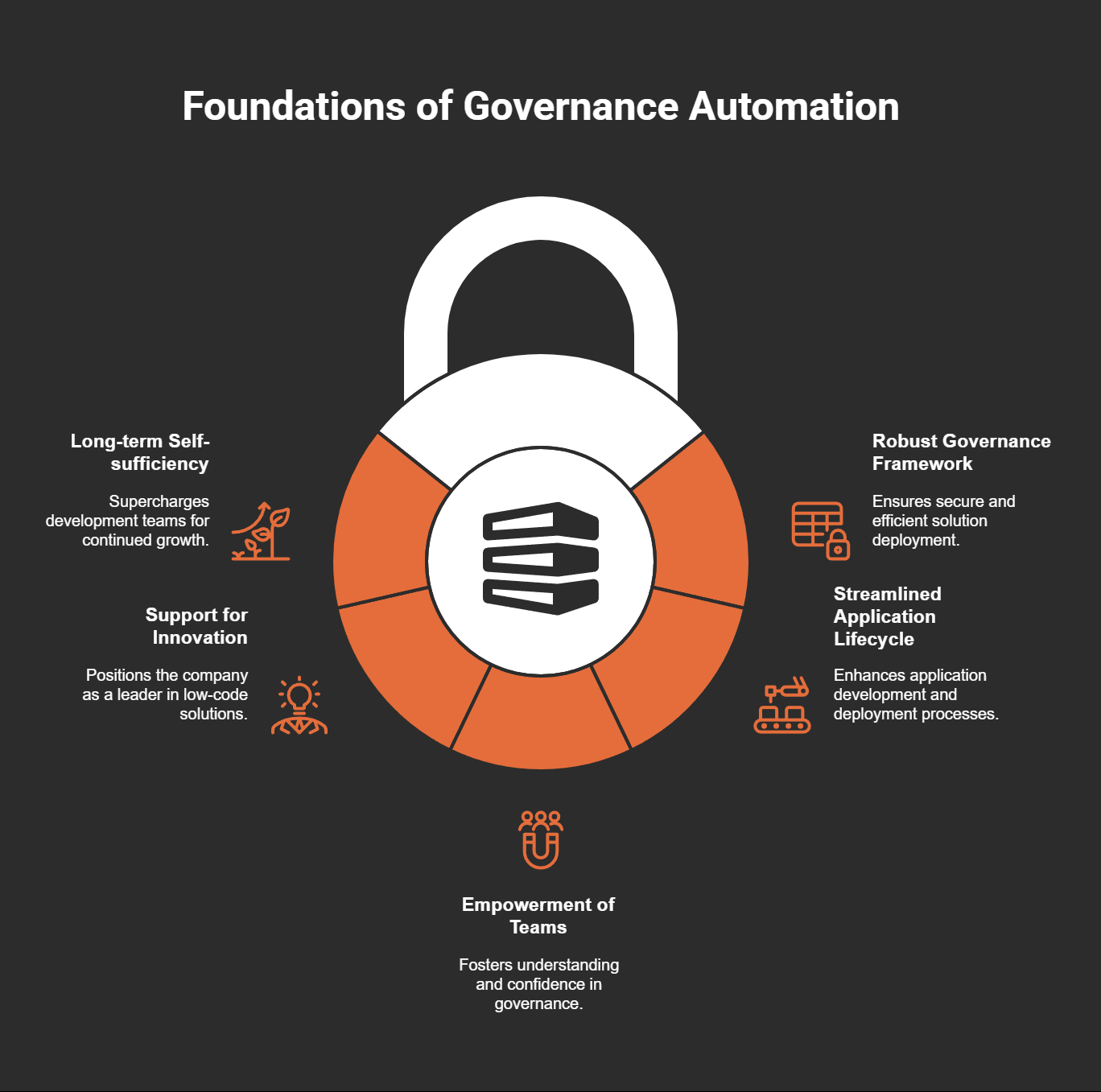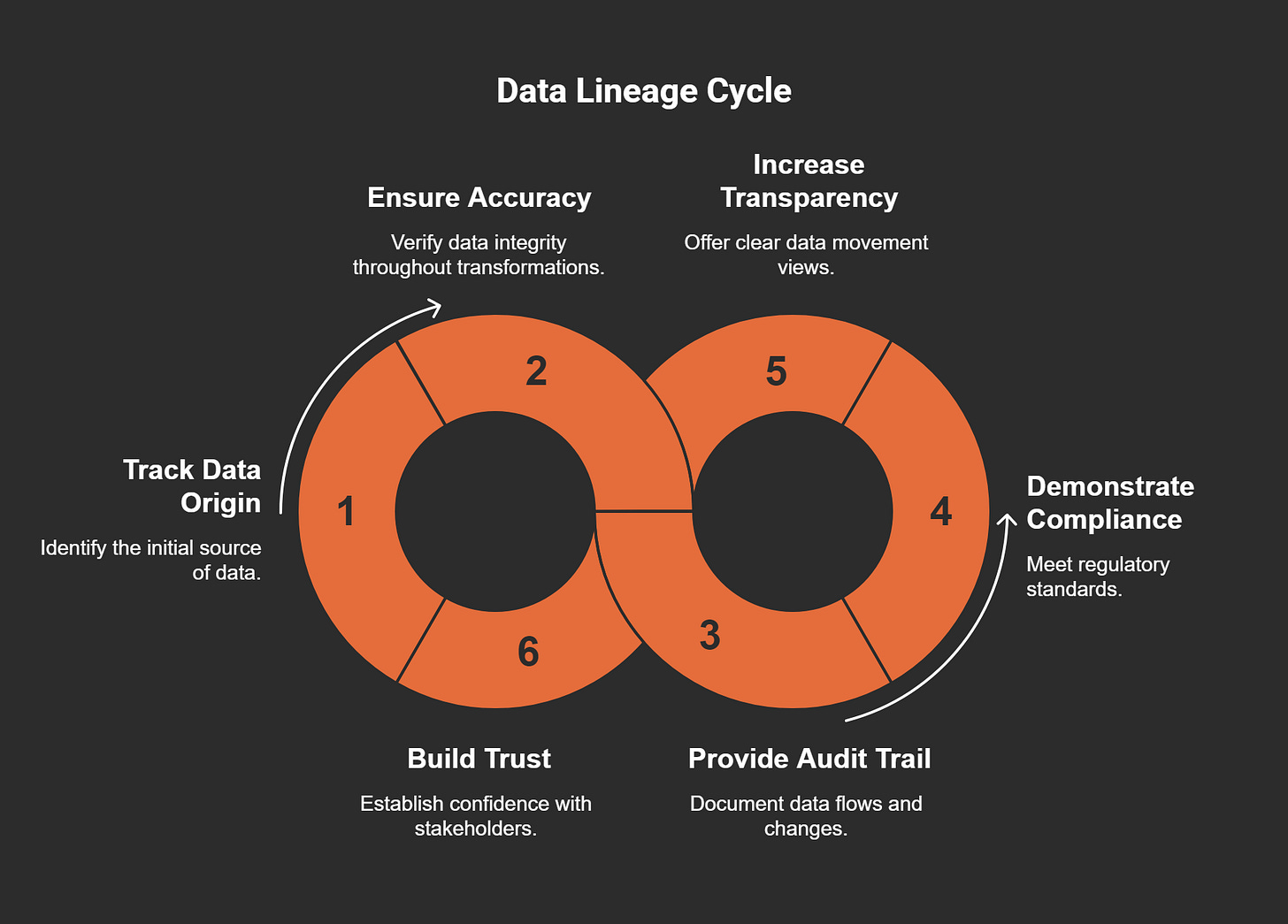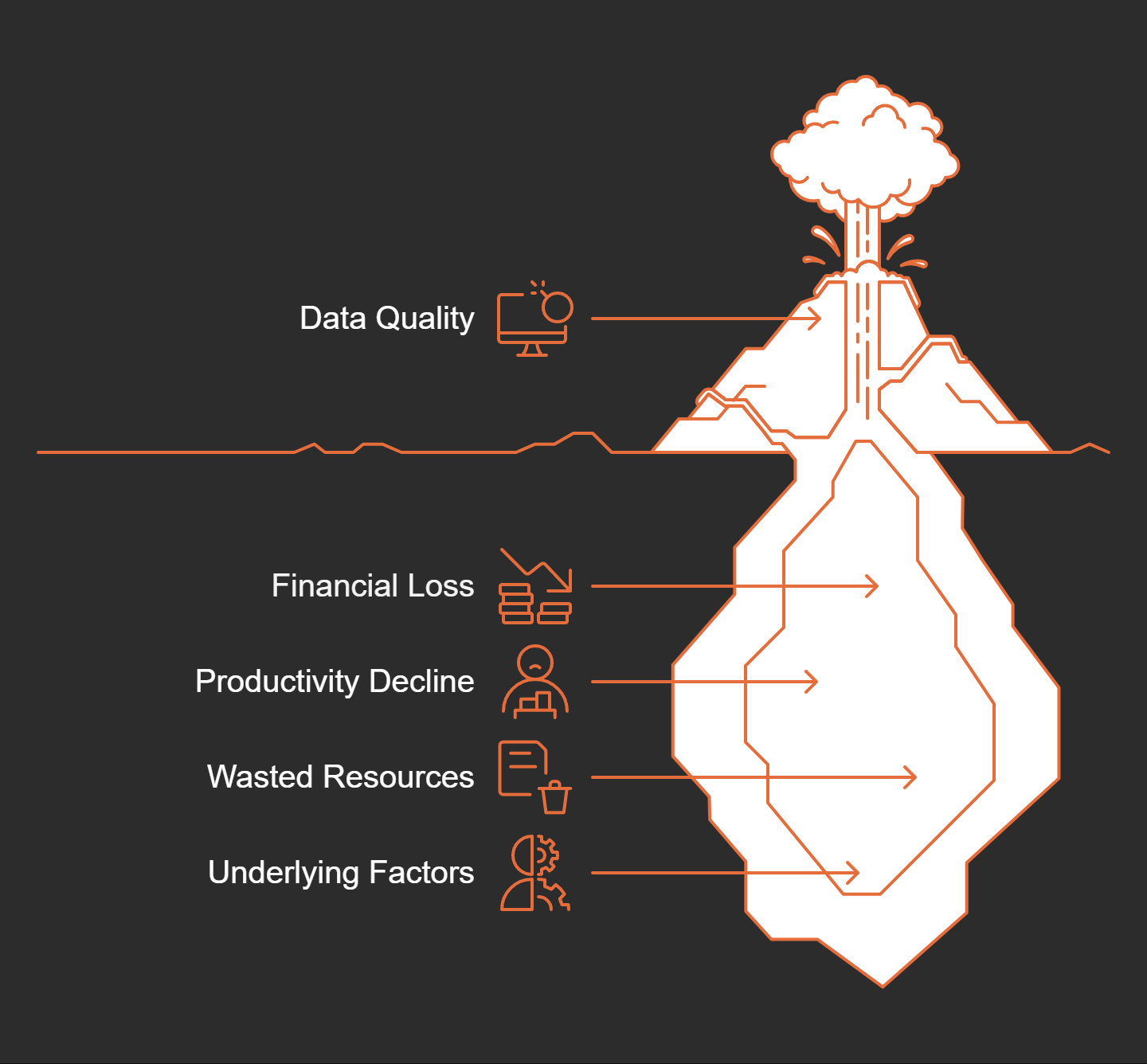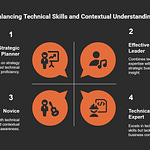Imagine pouring millions into building an AI system, only to watch it crumble because of something as fundamental as data lineage. It happens more often than you’d think. Poor data quality is the silent culprit behind 87% of AI projects that never make it to production. And the financial toll? U.S. companies lose a staggering $3.1 trillion annually from missed opportunities and remediation efforts. Beyond the financial hit, organizations face mounting pressure to prove the integrity of their data journeys. Without clear lineage, regulatory inquiries become a nightmare, and trust with stakeholders erodes. The stakes couldn’t be higher for AI developers.
Key Takeaways
Data lineage shows how data moves and changes over time.
Skipping data lineage can cause bad data, failed AI, and money loss.
AI tools can track data automatically, saving time and fixing mistakes.
Focusing on data lineage helps follow rules and gain trust.
Good data rules, checks, and teamwork improve data and fair AI.
Understanding Data Lineage
What Is Data Lineage?
Let’s start with the basics. Data lineage is like a map that shows the journey of your data from its origin to its final destination. It’s not just about where the data comes from but also how it transforms along the way. Think of it as a detailed record of every stop your data makes, every change it undergoes, and every system it passes through.
Here’s a quick breakdown to make it clearer:
Why does this matter? Without understanding data lineage, you’re flying blind. You can’t ensure transparency, improve data quality, or meet compliance standards.
Key Components of Data Lineage
Now, let’s talk about what makes up data lineage. It’s not just one thing—it’s a combination of several elements working together.
IT systems: These are the platforms where data gets transformed and integrated.
Business processes: Activities like data processing often reference related applications.
Data elements: These are the building blocks of lineage, defined at conceptual, logical, and physical levels.
Data checks and controls: These ensure data integrity, as outlined by industry standards.
Legislative requirements: Regulations like GDPR demand proper data processing and reporting.
Metadata: This describes everything else about the data, helping us understand its lineage better.
When all these components come together, they create a framework that ensures your data is reliable, traceable, and compliant.
The Role of AI-Powered Data Lineage
Here’s where things get exciting. AI-powered data lineage takes traditional lineage tracking to the next level. It uses automation to map out data transformations across complex systems, including multi-cloud environments.
Imagine trying to track data manually across dozens of platforms—it’s nearly impossible. AI-powered systems handle this effortlessly, improving governance, compliance, and operational efficiency. Automated lineage tracking doesn’t just save time; it also boosts transparency and reliability.
Organizations using AI-powered data lineage report fewer errors and better decision-making. It’s a game-changer for anyone dealing with large-scale data operations.
Why AI Developers Should Prioritize Data Lineage
Ensuring Transparency and Accountability
When it comes to building trust in AI, transparency and accountability are non-negotiable. As an AI developer, I’ve seen how data lineage plays a pivotal role in achieving both. It’s like having a detailed map that shows every twist and turn your data takes. This map ensures that every decision made by your AI system can be traced back to its source.
Here’s why this matters. Imagine you’re asked to explain why your AI made a specific prediction. Without data lineage, you’re left guessing. But with it, you can confidently show the origin of the data, how it was processed, and why the AI reached its conclusion. This level of transparency builds trust with stakeholders and customers.
Take a look at this:
Transparency isn’t just about meeting regulations. It’s about showing that your AI systems are reliable and trustworthy. And when you add accountability into the mix, you’re creating a foundation for effective AI governance.
Supporting Ethical AI Practices
Ethical AI isn’t just a buzzword—it’s a responsibility. As AI developers, we have to ensure that our systems don’t unintentionally harm users or reinforce biases. This is where data lineage becomes a game-changer. By tracking every step of the data journey, we gain visibility and control over the inputs shaping our AI systems.
Here’s what I’ve learned:
It supports the creation of trustworthy and compliant AI systems.
Improved data quality leads to more reliable AI-driven decisions.
It reduces risks associated with AI deployment.
It increases operational efficiency, enabling responsible AI usage.
When we prioritize data lineage, we’re not just improving our systems—we’re protecting the people who rely on them. Ethical AI practices start with understanding the data, and lineage provides the clarity we need to make responsible decisions.
Meeting Compliance and Regulatory Standards
Regulations like GDPR and CCPA aren’t just legal hurdles—they’re essential for protecting user data and ensuring fair practices. As an AI developer, I’ve seen how robust data lineage practices make it easier to demonstrate compliance with these regulations.
For example, data lineage provides a documented record of every transformation and usage of data. This is critical for meeting the requirements of GDPR, HIPAA, and SOX. A 2022 Deloitte survey even found that organizations with strong data governance practices achieved 30% higher success rates in governance initiatives.
Here’s why this matters:
Data lineage ensures you can demonstrate compliance with regulations.
It provides a clear audit trail, which is essential for regulatory compliance.
It helps organizations avoid penalties and maintain trust with stakeholders.
When you prioritize data lineage, you’re not just ticking a box for compliance. You’re building a system that’s transparent, accountable, and trustworthy. And in today’s world, that’s what sets successful AI developers apart.
Risks of Neglecting Data Lineage in AI Projects
Poor Data Quality and Its Consequences
I’ve seen firsthand how poor data quality can derail even the most promising AI projects. When data lineage is ignored, inconsistencies, missing values, and biases creep into datasets. These issues don’t just stay hidden—they snowball into bigger problems. For example, Zillow’s $306 million loss from its AI-driven home-buying program stemmed from flawed data predictions. That’s a staggering consequence of neglecting data integrity.
The financial toll of poor data quality is massive. Businesses in the U.S. lose $3.1 trillion annually, which is about 20% of their revenue. It doesn’t stop there. Poor data quality reduces labor productivity by up to 20% and wastes 21 cents of every marketing dollar. These numbers highlight how critical it is to track and maintain data lineage. Without it, organizations face failed projects, wasted resources, and missed opportunities.
Amplification of AI Bias
Bias in AI systems is a hot topic, and for good reason. When data lineage is overlooked, it becomes nearly impossible to trace the origins of training data. This lack of visibility allows biases to slip through unnoticed. I’ve learned that lineage tracking is essential for identifying and addressing these biases.
Here’s how it works:
It helps track datasets used in model development, making it easier to spot biases.
During deployment, it allows tracing inputs and outputs, so decisions can be linked to specific data sources.
It ensures the provenance and quality of training data, which is critical for ethical AI practices.
Without lineage, biases can amplify over time, leading to unfair or harmful outcomes. This isn’t just a technical issue—it’s an ethical one.
Increased Risk of Regulatory Violations
Regulations like GDPR and the EU AI Act demand transparency in data handling. Ignoring data lineage puts organizations at risk of non-compliance. I’ve seen how missing or incorrect lineage can lead to misguided decisions and hefty fines. For instance, financial institutions must trace risk model outputs to comply with standards like BCBS 239. Without proper lineage, they risk violating these regulations.
Organizations also face reputational damage when they fail to demonstrate compliance. Privacy laws require clear documentation of data handling processes. Missing lineage exposes companies to penalties and erodes trust with stakeholders.
Tip: Think of data lineage as your safety net. It not only ensures compliance but also protects your organization from operational failures and legal risks.
Neglecting data lineage isn’t just a technical oversight—it’s a business risk. From poor data quality to amplified biases and regulatory violations, the consequences are too significant to ignore.
Implementing Effective Data Lineage Practices
Tools for AI-Powered Data Lineage
When I first started exploring data lineage tools, I was amazed by how much they simplify the process of tracing data to its origins. These tools are like having a GPS for your data, showing every stop it makes and every transformation it undergoes. They automate the discovery and visualization of data flows, which not only saves time but also ensures compliance with regulations.
Here are some features I’ve found incredibly useful in AI-powered data lineage tools:
Centralized lineage tracking: It enhances visibility and makes troubleshooting a breeze.
End-to-end traceability: This captures every stage of the data lifecycle, ensuring nothing gets overlooked.
Contextual data enrichment: It prepares datasets for AI readiness by adding valuable context.
Standardization: Consistency in data processing becomes effortless.
Version control and rollback capabilities: These ensure data integrity, especially during updates.
Team-wide collaboration: Transparency and accessibility improve when everyone is on the same page.
Some tools even go a step further by offering bias detection and automated tracking of data movement. These features are game-changers for maintaining high data quality and security standards. They also help organizations build enhanced data governance frameworks that align with compliance requirements.
Pro Tip: Look for tools that offer transparent models and clear documentation of data sources. They make it easier to explain your AI’s decisions to stakeholders.
Best Practices for Data Governance
Over the years, I’ve learned that effective data governance isn’t just about having policies—it’s about embedding those policies into everyday workflows. Strong data lineage practices are the backbone of any governance strategy. They ensure that data is reliable, traceable, and ready for AI applications.
Here are some best practices I swear by:
Define clear data lineage policies: Start by documenting how data should flow through your systems. This creates a roadmap for everyone to follow.
Standardize processes: Consistency is key. Use standardized formats and protocols to avoid confusion.
Encourage collaboration: Bring together data engineers, analysts, and business teams. When everyone works together, governance becomes a shared responsibility.
Leverage metadata: Metadata acts as a guide, providing context for your data. It’s essential for understanding lineage and ensuring compliance.
Regular audits: Periodically review your data lineage practices to identify gaps and make improvements.
By following these practices, I’ve seen organizations transform their data governance strategies. They not only improve data quality but also build trust with stakeholders.
Note: Strong governance isn’t just about avoiding penalties. It’s about creating a culture where data is treated as a valuable asset.
Continuous Monitoring and Maintenance
One thing I’ve realized is that data lineage isn’t a “set it and forget it” process. Continuous monitoring and maintenance are essential for keeping your AI systems running smoothly. Without them, data inconsistencies can creep in, leading to model drift and inaccurate predictions.
Here’s why continuous monitoring matters:
It ensures data consistency, which is crucial for preventing drift in AI model predictions.
Real-time data updates lead to quicker and more accurate decision-making.
Early detection of changes in data patterns allows for timely retraining of models.
I’ve also noticed that robust monitoring practices accelerate incident resolution. When you can quickly trace the source of an issue, you save time and resources. This directly correlates with better AI project outcomes.
To maintain effective data lineage practices, I recommend:
Setting up automated alerts for data anomalies.
Regularly reviewing lineage reports to spot trends and potential issues.
Keeping your lineage tools updated to handle new data sources and formats.
Reminder: Continuous monitoring isn’t just about fixing problems. It’s about extracting more value from your data assets and staying ahead of potential risks.
By prioritizing these practices, you’ll not only enhance your data governance but also set your AI projects up for long-term success.
The Future of Data Lineage in AI Development
Emerging Trends in Data Lineage
I’ve noticed that data lineage is evolving rapidly, and it’s exciting to see where it’s headed. One trend that stands out is the shift toward real-time lineage tracking. Organizations no longer want to wait hours—or even minutes—to understand their data flows. They want instant insights. This demand has led to tools that can map data journeys in real time, making it easier to spot issues before they escalate.
Another trend I’ve observed is the integration of lineage tracking with advanced analytics. Imagine combining lineage data with predictive models to forecast potential bottlenecks or compliance risks. It’s like having a crystal ball for your data operations. Plus, there’s a growing focus on user-friendly interfaces. Even non-technical teams can now explore lineage maps, which fosters collaboration across departments.
The Impact of AI on Lineage Tracking
AI has completely transformed how we approach lineage tracking. Traditional methods often relied on manual processes, which were slow and prone to errors. Now, AI automates the entire process, from mapping data flows to identifying anomalies. This automation doesn’t just save time—it also enhances transparency and explainability. For high-risk applications, like healthcare or finance, this is a game-changer.
Here’s what I’ve found most impressive about AI-powered lineage systems:
They track input data, every operation it undergoes, and the final decision or prediction.
They allow organizations to quickly identify and fix data quality issues.
They provide a clear view of the data lifecycle, which is crucial for audits and model validation.
Understanding how data moves and transforms gives companies a competitive edge. It ensures that decision-making is based on accurate, reliable information.
Preparing for Regulatory Changes
Regulations are evolving just as fast as technology, and staying ahead is critical. I’ve learned that preparation starts with mapping and cataloging datasets. This helps identify which data falls under new regulations, like the European Health Data Space (EHDS). It’s also essential to assess where the data is stored and whether it contains sensitive information, like trade secrets.
Organizations should also invest in systems for scanning, labeling, and anonymizing data. These capabilities ensure compliance with privacy laws and protect user information. As new datasets are created, ongoing analysis and labeling will be necessary to maintain compliance. It’s not a one-time effort—it’s a continuous process.
Tip: Think of regulatory changes as an opportunity to strengthen your data governance. By preparing now, you’ll avoid costly penalties and build trust with stakeholders.
Data lineage is the backbone of successful AI projects. It ensures transparency, compliance, and ethical practices, which are essential for building reliable systems. I’ve seen how tracking data origins and transformations helps organizations maintain high data quality and meet governance standards. This isn’t just about avoiding mistakes—it’s about creating AI systems that perform at their best.
Neglecting lineage can lead to serious risks. Poor data quality causes AI models to fail, while missing compliance metrics exposes organizations to legal trouble. These issues don’t just hurt projects—they damage reputations. Early detection of data issues and consistent governance prevent these outcomes, ensuring smooth operations and better decision-making.
By prioritizing data lineage, AI developers can build systems that are trustworthy and high-performing. It’s not just a technical step; it’s a strategic advantage that sets successful projects apart.
FAQ
What is the difference between data lineage and data governance?
Data lineage tracks the journey of data, showing where it came from and how it changed. Data governance sets the rules for managing data, ensuring it’s accurate, secure, and compliant. Think of lineage as the map and governance as the traffic laws.
How can I start implementing data lineage in my organization?
Start small. Use tools that automate lineage tracking and visualize data flows. Focus on critical datasets first. Gradually expand to cover all systems. Collaboration between IT and business teams makes the process smoother.
Why does AI amplify errors in data more than traditional systems?
AI learns patterns from data. If the data has errors, the AI reinforces them during training. Unlike traditional systems, AI doesn’t just process data—it adapts to it. That’s why lineage tracking is crucial for catching errors early.
Are there affordable tools for data lineage tracking?
Yes! Many tools offer scalable solutions for small teams. Look for open-source options like Apache Atlas or lightweight commercial tools. They provide essential features without breaking the budget.
Can data lineage help prevent AI bias?
Absolutely! By tracing the origins of training data, you can spot biases before they affect your AI. Lineage tracking ensures transparency, making it easier to identify and fix problematic data sources.













